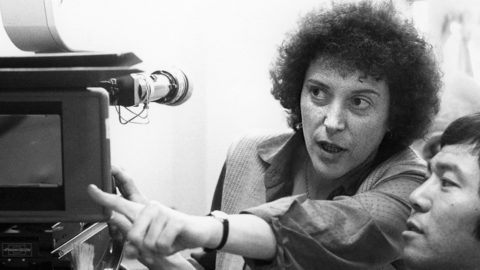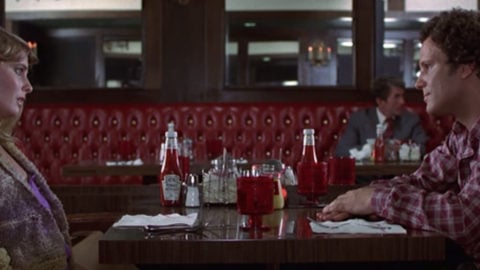Film of the Week: Between the Lines
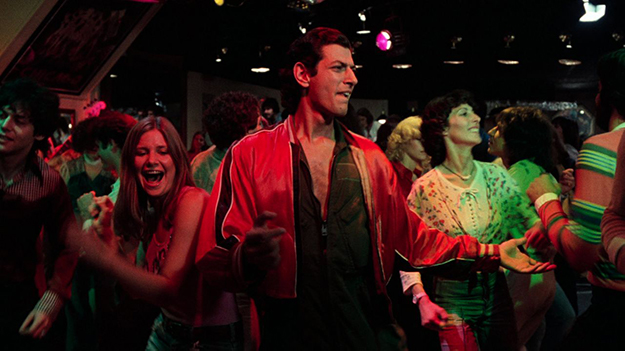
It’s a pleasure re-watching Joan Micklin Silver’s restored Between the Lines (opening February 22 at Quad Cinema in New York), 42 years after it was made. I saw it when it was first released, and it played no small part in changing my life: it fueled my nagging desire to be a journalist, and in particular, made me want to be a rock critic, a career I dabbled with for a while. What appealed about that option wasn’t anything to do with the work that the movie’s music writer Max Arloft did: apparently he didn’t do any at all. For the most part, Max—played by Jeff Goldblum, then in the most angular flush of youth—loped around wisecracking, free-associatively bullshitting about the Beatles and Wallace Stevens, soaking up female adulation while wearing a very late-’70s ensemble of baggy plastic jacket and boiler suit, and selling review LPs for cash. The only one of these that, I later discovered, was realistically an aspect of the profession was selling the LPs; the boiler suit idea I tried and quickly rejected before I entered the profession.
But when I was working, in the late ’80s and early ’90s, on a London magazine that found itself staring its own demise in the face, I remembered Silver’s movie about independent journalism as a compendium of possibilities hard won and lost. There came a point on my publication when practically every day you could find yourself shouting, “It’s exactly like Between the Lines!”
The film’s fictional Boston newspaper the Back Bay Mainline has a banner that looks strikingly close to that of the Village Voice, and it highlights its countercultural credentials by having hobbitish ’60s–’70s hero Michael J. Pollard—his character credited just as “The Hawker”—as its main vendor, literally taking it to the streets. The Hawker, who seems to live under a pinball machine in the Mainline office, is seen cheerily working the Boston traffic in the opening sequence, touting it at car windows: “All the news behind the news… and some hippie smut.”
In the Mainline of 1977, however, you sense that the days of hippie smut are long gone, and apparently the hippie ideals too. Many of the staff members we meet seem to have a past, and remember better days: Michael (Stephen Collins) now mainly at home working on his book, is trading on his memories of the counterculture, and is now poised to be a mainstream media hot-shot, as long as he can get that deal. Harry (John Heard) has a history as a fearless hustling reporter, but is only too aware that his great exposés in the past didn’t change much, and has either burned out, lost interest, or is waiting for something else to wake him up (the sense of disillusionment is all the more poignant since Heard, then aged 31, looks about 18 in some shots).
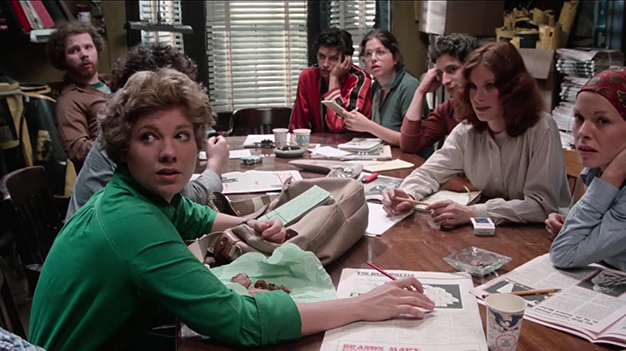
The film was written by Fred Barron, later a TV sitcom maven, who had a background working on Boston independent organs the Real Paper and the Boston Phoenix. These are thanked in the end credits along with the Los Angeles Free Press, the Soho Weekly News, and the Village Voice—the latter being the last survivor of these, which itself ceased operations as a print publication in 2017. Anyone who ever worked on a paper or a magazine like these will heave a sigh; younger generations might find it hard to believe that print outlets like the Mainline ever existed. But in some ways, there’s something timeless about the world depicted in Between the Lines: whether it’s a print organization with actual ink that stains your hands, or a present-day online platform hot-desking out of some creative hub, there’s something universal about the idea of people with ideals (active or faded), and some degree of motivating careerism, thrown into office space together, cooperating, nurturing rivalries, sparking off each other for better or worse, maybe sleeping with each other.
Between the Lines comes across as a lament for the death of counterculture journalism—although in Britain, the next wave of counterculture sparked by late ’70s punk, still had a few more years life in it. But Silver’s film—bristling with a loose, nervy energy that she corrals in expertly—is also a comedy about how ideals persist and replenish themselves. One of a wave of women emerging as distinctive just-off-mainstream film-makers in the ’70s—others being Claudia Weill, Joan Darling, and Joan Tewkesbury—Silver is best known for two Jewish-themed stories about women in New York, Hester Street (1975) and Crossing Delancey (1988). Between the Lines isn’t quite as female-centered as either, more an ensemble piece revolving around various heterosexual workplace relationships. There is a healthy proportion of women in this office, although only one who stands out as carving a strong niche and decisive career path for herself—photographer Abbie (Lindsay Crouse), who’s in an on-off relationship with Harry. One of the two other women in the foreground, receptionist Lynn (Jill Eikenberry), is more depicted as a general den mother, who complains she doesn’t really have a talent, but is told by her female friends that she’s the heart and soul of the place that keeps it together. As for Laura (Gwen Welles), she’s a writer who has more or less reconciled herself to playing support act to bullishly narcissistic and neurotic Michael, until she makes a play for independence—which works only up to a point.
It’s Abbie who displays the fire that could keep the paper and its values going: hearing that there are still abuses at the care home that Harry once wrote about, she suggests rushing there instantly and photographing it. Her energy makes her overstep a professional boundary when accompanying Harry to a strip club; he’s writing a story about the dancers, and finds Abbie taking over his interview with stripper Danielle (a brisk, funny Marilu Henner, just pre-Taxi). But then, her subsequent time hanging out with Danielle shows she’s got the empathy required to make a revealing, lively piece that Harry’s tired, by-rote questions aren’t going to produce.
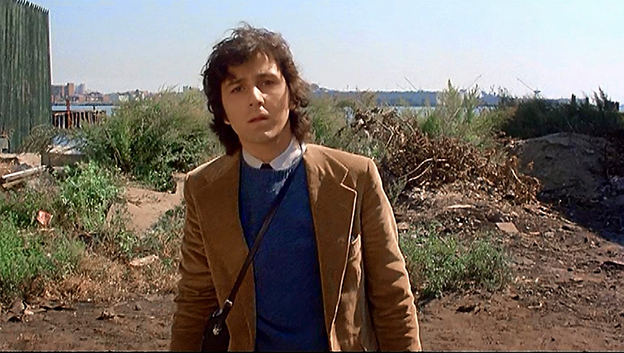
There’s also an eager doofus of a corduroy-jacketed wannabe around the place, David (Bruno Kirby), an earnest intern or perhaps just hanger-on. He picks up a bit of stray information about a local music bootlegger: he’s determined to write a piece on him, even though he has no idea how to, and gets brush-off after brush-off from his subject. Still, he learns the trade slowly, even adopting a false name and preposterous phony accent to get past his target’s switchboard (he may be a lousy journalist, but he’s a born “blagger,” as such tricksters are known in the trade).
What’s a little shocking about the film now, although it’s no doubt what makes it true to life, is the almost aristocratic narcissism that defines many of the male characters, who are hugely intolerant of people they consider less talented, or less cool, or less good-looking then themselves. It’s profoundly uncomfortable to see Harry’s lofty contempt when casually dismantling a piece—about the fate of whales—that David has submitted for his advice, and spinning him some woolly instructions to write from the whale’s point of view.
The real stooge in this comedy is Stanley—the name alone marks him as a stiff—who runs the magazine’s advertising department, wears a bow tie and a crisp moustache, and looks like a much more formal Groucho Marx (in fact, it turns out that Lewis J. Stadlen, who is superbly flustered in the role, once did play Groucho for the British TV arts series Omnibus). Stanley’s the Establishment man in a non-Establishment milieu—as well as an artless maker of passes at unimpressed women—and therefore ripe to be mocked as the Brothers once mercilessly mocked Margaret Dumont. But there’s a sour edge of cool-cat cruelty here: when editor Frank (Jon Korkes), informed that he’s losing copy pages for ad space, he reacts by terrifying the poor nebbish, twisting Stanley’s arm behind his neck; in 1977, it probably came across as Sticking It to the Man, but now it feels unpalatably brutish. At moments the film revels in a broad, brash Animal House humor, for example when a scowling figure in overalls (Raymond J. Barry) walks in, smashes a typewriter, and announces to onlookers that they’ve just witnessed a work of conceptual art by Herbert Fisk—and that he’s available for interview. The incident sparks a chain reaction of instantaneous Laurel and Hardy destruction, in which the final target, inevitably, is Stanley’s shirt; this sequence, however, is a hoot.
We get very little sense, though, of what the Mainline actually produces. Its big stories seem to be in the past, as Harry laments: “We were dangerous then—sowing the seeds of dissent, muckraking.” The only person on the case is Abbie, who’s just pragmatically keen to get out and do what she does. What these people really seem to produce is a kind of nervy conviviality: there’s a long sequence where the entire staff has a cool time at a music business showcase for an agreeably fiery Southside Johnny and the Asbury Jukes (we never get a sense of who else is there, though, as if it’s the paper’s private bash). The sequence also provides a moment for Joe Morton, one of two black staffers on the Mainline and the only one with a speaking part—but still with next to nothing to do in the film except sing a couple of lines of blues at the soiree, with Goldblum vamping on electric piano.
You might say that Between the Lines is barely about a newspaper at all, more about a bunch of youngish people whose energies are running out, as American counterculture itself had run their course, with the ’80s and its hard-nosed principles about to kick in. It’s only a matter of time before the staffers are hearing they need “a broader-based readership to attract more advertisers”—which is why Silver’s film also feels now like a prescient farewell to the values that had made the new American cinema of the ’70s so vital.
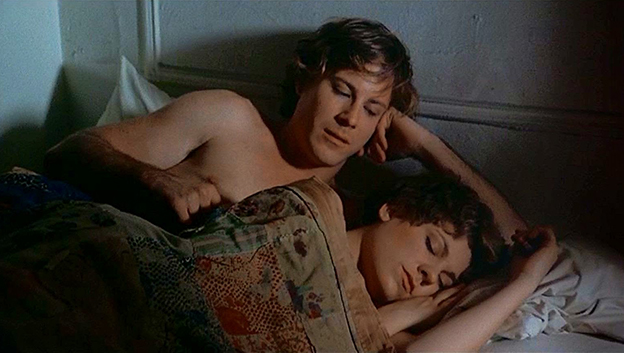
What’s strange now is seeing a young, fresh-faced cast representing a generation seemingly reaching an end of the road; poignantly, several actors (Welles, Heard, Kirby) are no longer with us. Lindsay Crouse looks like a kid, with an ingénue beam of naiveté and enthusiasm: you can’t believe she’s 10 years away from the glacially enclosed psychiatrist heroine of David Mamet’s House of Games. Heard (who worked with Silver again on the 1979 film variously entitled Head Over Heels or Chilly Scenes of Winter, depending on the ending) has a weary, foppish indolence. The most striking performance is from Gwen Welles, two years after her deluded, humiliated would-be singer in Robert Altman’s Nashville (there’s definitely a touch of Altman to Silver’s film, in the way the voices busily buffet each other all the time). There’s something deeply affecting about the weird, weary musicality of her delivery, particularly when Laura is in denial: “It is what I want,” she airily insists, about something you know she doesn’t.
Between the Lines drifts episodically from episode to episode, from success to compromise (of both the redeeming and the soul-destroying sorts), to failure to defeat to carrying on anyway, in a loose, sometimes seemingly free-associative way. It ends with Goldblum’s charming, goofy (but somehow kind of monstrous) Max doing what he’s best at: hustling drinks from strangers in a bar. There was a time when critics could probably do that with ease; I think I came to the profession too late for that. Anyone who still feels idealistic or romantic about the trade, and who missed out on struggling print journalism and the fraught camaraderie, obsessiveness, delusions, and satisfactions it entailed, should watch Silver’s bristling, richly enjoyable film and marvel. And the cinephiles among you, spare a thought for the film critic, briefly glimpsed at an editorial meeting, who nervously suggests that the paper should send him to cover Cannes—and promptly gets laughed out of court.
Between the Lines opens at Quad Cinema in New York City on Friday, February 22.
Jonathan Romney is a contributing editor to Film Comment and writes its Film of the Week column. He is a member of the London Film Critics Circle.



